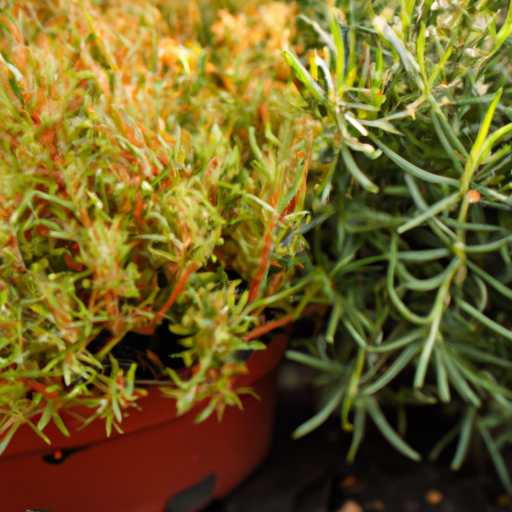The Secret to Thriving Plants in Your Container Garden
Container gardening has become increasingly popular among garden enthusiasts, as it offers a convenient way to grow plants in smaller spaces or areas with poor soil quality. Whether you have a small balcony, a tiny patio, or just limited space in your backyard, container gardening allows you to enjoy the beauty and benefits of growing plants. However, for your plants to thrive in containers, there are some essential tips and secrets that you need to know. In this article, we will delve into the secret to thriving plants in your container garden.
1. Choosing the Right Containers
Selecting the right containers is crucial for the health and growth of your plants. The size of the container should match the eventual size of the plant; otherwise, it may become root-bound and hinder its growth. Porous containers made from clay or terracotta allow for better air circulation and drainage compared to plastic containers. However, plastic containers are lighter and more portable.
Ensure that your chosen container has adequate drainage holes at the bottom to prevent waterlogging, which can lead to root rot. Additionally, be mindful of the material’s durability under varying weather conditions.
2. Picking the Perfect Potting Mix
The soil used in container gardening plays a significant role in providing nutrients to your plants. Avoid using regular garden soil as it tends to compact too tightly when placed in a container. Instead, opt for high-quality potting mix specifically designed for container gardening. These mixes are lightweight and well-draining while retaining enough moisture for optimal plant growth.
Consider incorporating organic matter such as compost or well-rotted manure into your potting mix to enrich it with essential nutrients.
3. Providing Adequate Drainage
Proper drainage is crucial for preventing waterlogged roots, which can lead to root rot and other fungal diseases that harm plant health. In addition to choosing containers with drainage holes, elevate them slightly by using pot feet or adding a layer of gravel at the bottom. This elevates the containers, allowing excess water to flow freely and preventing the roots from sitting in standing water.
4. Watering Efficiently
Watering is a critical aspect of container gardening, and finding the right balance is essential. Containers tend to dry out more quickly compared to traditional garden beds due to increased exposure to air and sunlight. The frequency of watering depends on various factors including plant type, container size, and environmental conditions.
Before watering, check if the top inch of soil is dry by sticking your finger into it. If it feels moist, then your plants do not need water yet. When watering, aim to saturate the entire potting mix until water begins draining out through the bottom. This ensures that water reaches all parts of the root system.
5. Providing Adequate Sunlight
Most plants require sufficient sunlight for photosynthesis and healthy growth. Before selecting plants for your container garden, assess the available sunlight in your chosen location. While some plants thrive in full sun conditions, others prefer partial shade or even full shade.
Observe shadow patterns throughout the day and position your containers accordingly. If you have limited direct sunlight available, consider using shade-tolerant varieties or relocating your containers periodically to maximize light exposure.
6. Fertilizing Regularly
Plants grown in containers rely solely on the nutrients provided by their potting mix since they cannot tap into soil nutrients as they would in a traditional garden bed. Therefore, regular fertilization is essential for maintaining plant health and promoting vigorous growth.
Use a slow-release fertilizer that gradually releases nutrients over time or opt for organic alternatives such as compost tea or fish emulsion-based fertilizers every few weeks during the growing season.
7. Pruning and Deadheading
Regular pruning and deadheading help promote bushier growth and encourage continuous flowering in many container plants such as annuals and perennials. Remove dead or faded flowers to redirect the plant’s energy towards new growth.
Additionally, pruning can help control the size and shape of your container plants, preventing them from becoming overgrown or leggy. Observe each plant’s specific pruning needs and adjust accordingly.
In conclusion, the secret to thriving plants in your container garden lies in careful planning and attention to detail. Choosing the right containers, providing proper drainage, using high-quality potting mix, watering efficiently, providing adequate sunlight, fertilizing regularly, and practicing pruning and deadheading are all key factors in ensuring the health and success of your container plants. With these secrets in mind, you’ll be well on your way to creating a vibrant and flourishing container garden that brings joy and beauty to any space you choose.













